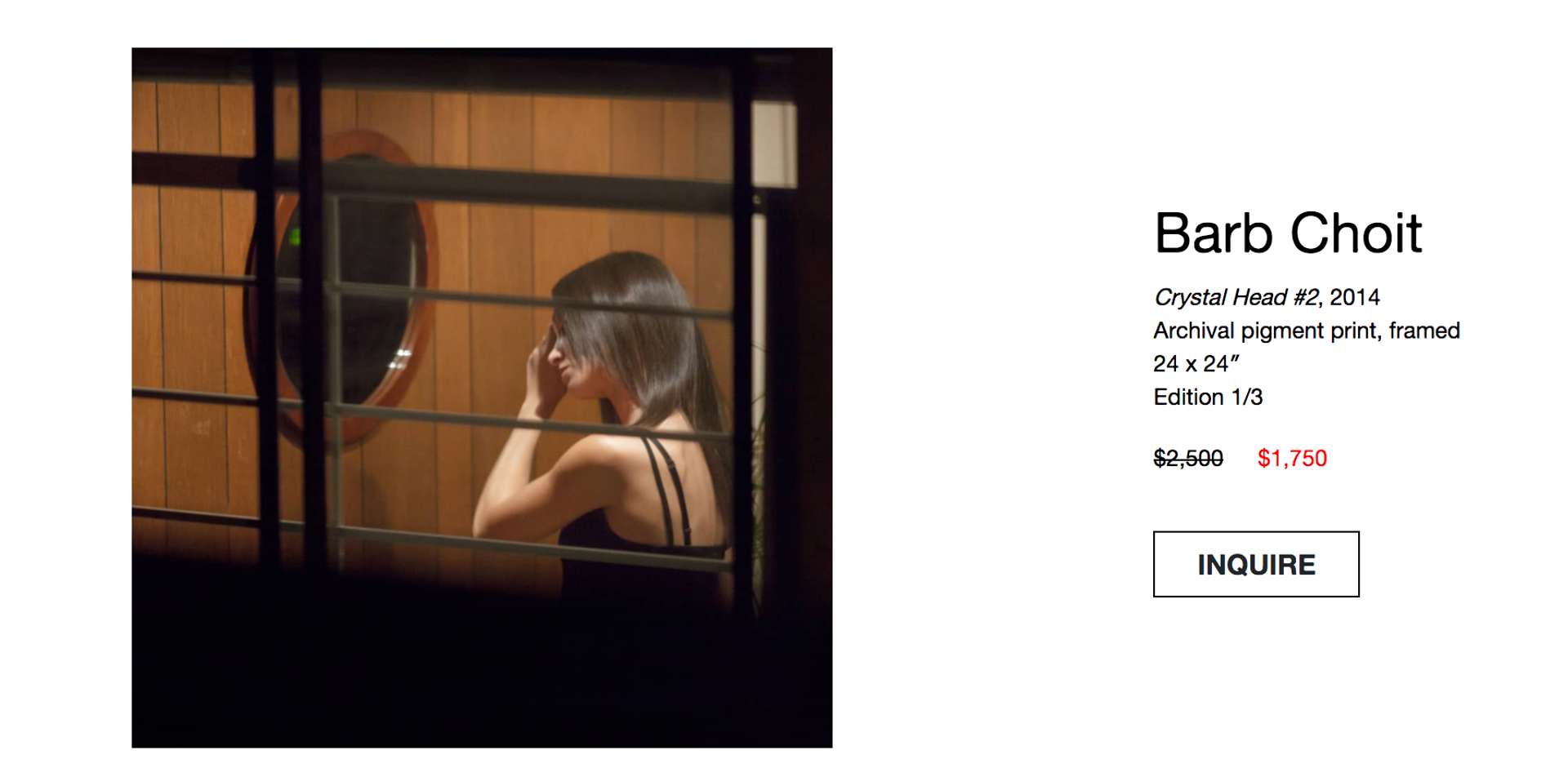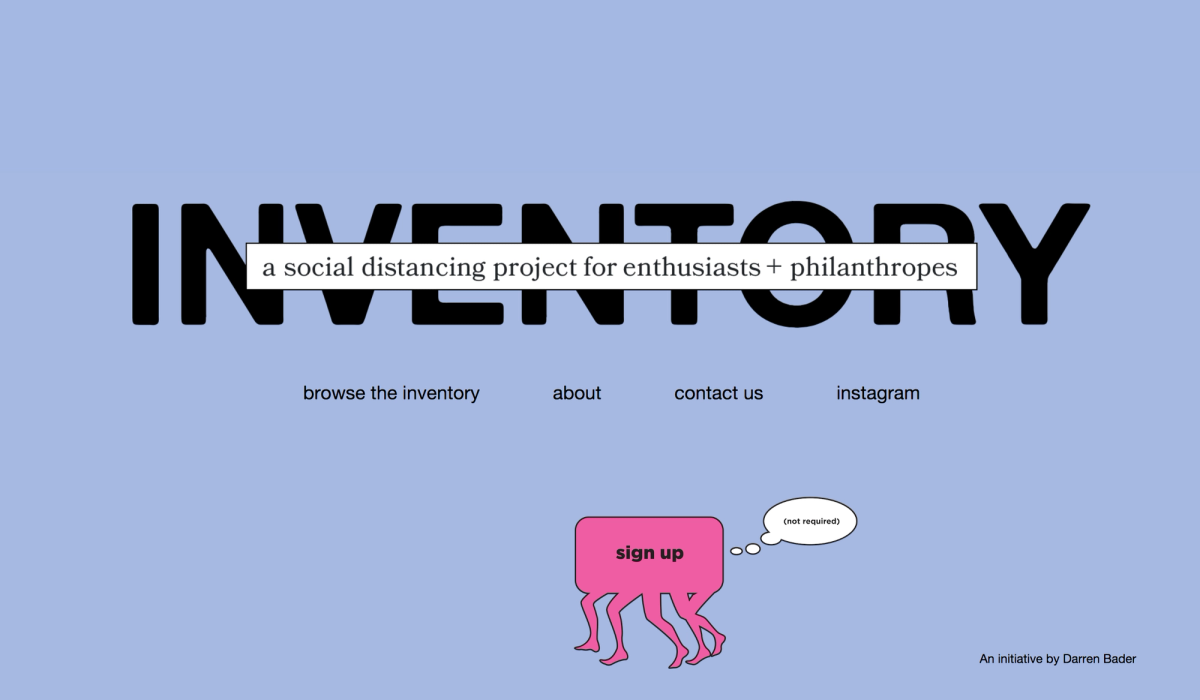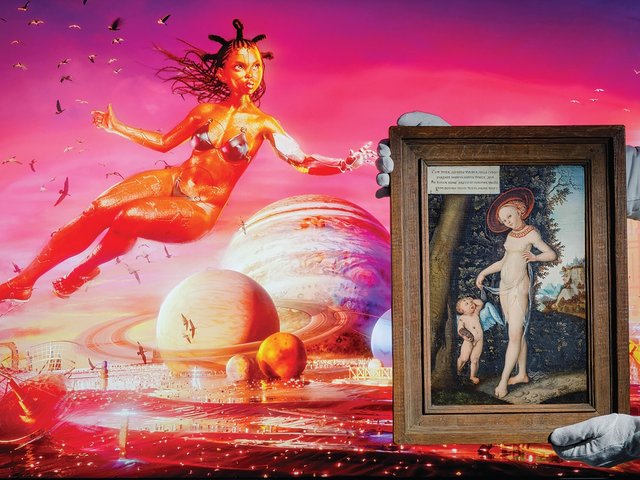As the art world swims through a sea of new online sales platforms, the New York-based artist Darren Bader has launched his own on the eve of Frieze New York’s maiden virtual voyage.
Known for his cheeky conceptual practice, Bader is calling the platform Inventory—the industry’s taboo word for unsold art held in storage, whether in the artist’s studio or in the storeroom of a gallery. The site is currently able to host work by 20 artists a week (in addition to Bader's own); prices are clearly marked under each work and some are even—horror of horrors—shown as marked down by anywhere from 30% to 90% of its primary market price.
The artist says he has been developing the site over the course of the last month since coronavirus (Covid-19) lockdowns brought gallery exhibitions and fairs to an indefinite end this year. Inventory “aims to be a modest and viable solution in our commercially tumultuous time—one means of keeping art living/breathing/circulating, while also providing much-needed financial assistance to a variety of people in need”, Bader says in an email sent today to supporters and collectors seen by The Art Newspaper.
As artists and dealers face huge losses of annual income and revenue, many are scrambling to sell work just to keep the lights on and food in the fridge. Yet the art market is typically resistant to so-called “liquidation” sales, no matter how necessary. Bader, who has long interrogated the meaning of art and its relationship to money— in 2015, he raised nearly $16,000 on the crowdfunding website Indiegogo in order to sell the money itself as a lot at a Christie’s auction in London—posits the current crisis as an opportunity to rethink the traditional market model.

Screenshot of Barb Choit's work on offer through Inventory. Courtesy of the artist and Fierman, New York
“We've been through recessions and bubble-bursts before and know that too little is repaired—some of the artists, dealers, collectors we respect most are hit the hardest,” he says. “As we find ourselves in the midst of a singular, financially precarious, perhaps epochal uncertainty, it could be an auspicious moment to stop (tacitly) insisting artists produce anew for the market-driven sake of producing anew. Novelty and trend, however enticing, do not good art define.”
Works by artists such as Margaret Lee, Barb Choit, Andrew Norman Wilson and Jesse Wine feature in Inventory’s, well, inventory. But artists and their dealers are able to switch out the works as they see fit and as they sell. Each work on the site has been authenticated by its author, is more than two years or more in age and included in a gallery’s or artist’s inventory the majority of that time and is marked down by up to 90%.
Bader, who is bankrolling the site himself for the time being, takes a 5% administration fee for each sale, which he says will go down if Inventory proves a success and begins bringing in more partners, participants and revenue.
Additionally, 40% of each sale will go to a Covid-19 related charity or a “needy peer of the artist’s choosing”, Bader says, while 22% of a sale will go to the gallery in whose inventory the sold work resides “to keep employees employed, artist payments issued and doors able to re-open” and 33% of a sale will go directly to the artist who made the work. Sales are processed through the individual galleries.
“I believe in our community as a vital, collegial, and compassionate one. We work hard, often competing hard, believing in art for what it is: an absolutely imperfect, but utterly unassailable remedy,” Bader says. “As we all continue along this unpaved road, may we find growth, health, humour, community, curiosity, and ingenuity."



